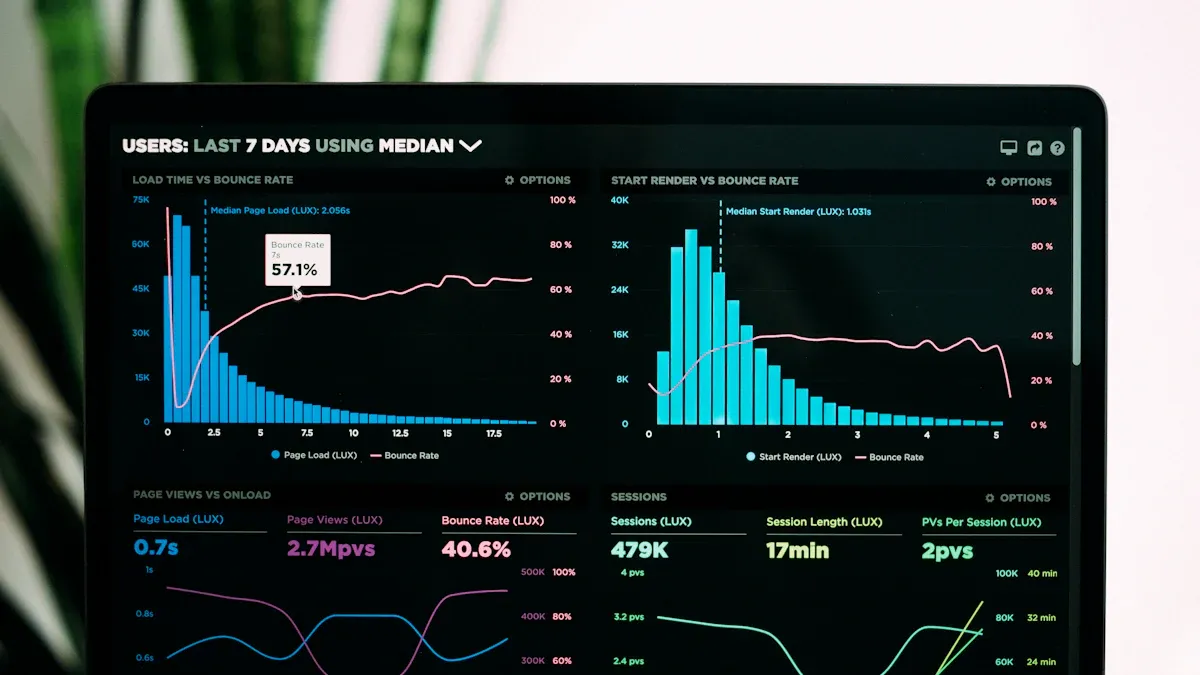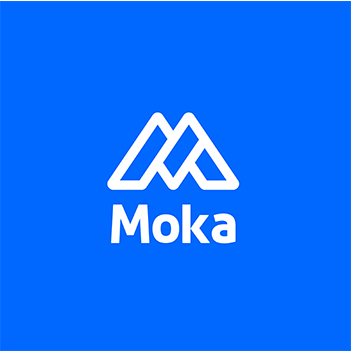How Psychographics Can Transform Workforce Recruitment in 2025

Recruitment has always been about finding the right person for the job, but traditional methods often fall short. They rely heavily on demographics like age, education, or location, which only scratch the surface of who a candidate truly is. This is where psychographics comes in. By studying personality, values, interests, and lifestyles, psychographics in recruitment helps you understand what drives candidates beyond their resumes.
Traditional hiring methods face growing challenges. For example:
Statistic/Trend | Description |
|---|---|
Cost per Hire | The average cost per hire in the U.S. is $4,700, rising for executive roles. |
Difficulty in Sourcing Candidates | 90% of hiring managers struggle to find skilled candidates, especially in tech. |
Time to Fill Positions | It takes an average of 42 days to fill a position, causing productivity losses. |
Shift to Skill-Based Hiring | 63% of recruiters now focus on skills rather than degrees. |
Psychographics addresses these issues by offering deeper insights into candidates’ motivations and priorities. It ensures a better cultural fit and reduces hiring risks. By 2025, workforce psychographics will revolutionize how you attract, evaluate, and retain top talent.
Key Takeaways
Psychographics looks deeper than demographics. It studies values and interests.
It helps find jobs that match personalities, boosting happiness at work.
Adding psychographics to hiring plans improves teamwork and company culture.
Employers can use surveys and AI to learn about candidates' traits.
Being honest and protecting data is key to gaining candidates' trust.
Understanding Psychographics vs. Demographics
What Are Psychographics?
Psychographics is all about understanding what makes people tick. It dives into their inner world—things like their values, beliefs, and behaviors. You might hear it summed up as "AIO variables," which stand for Activities, Interests, and Opinions. These traits give you a clearer picture of what drives someone’s decisions. For example, psychographics can reveal if a candidate values teamwork, enjoys creative hobbies, or thrives in fast-paced environments.
Unlike demographics, which focus on measurable facts like age or income, psychographics explores the "why" behind a person’s actions. It’s not just about who someone is on paper but what motivates them. This deeper insight is why psychographics is becoming a game-changer in recruitment.
Key Differences Between Psychographics and Demographics
At first glance, psychographics and demographics might seem similar, but they’re quite different. Demographics give you the basics—age, gender, education, and job title. Psychographics, on the other hand, digs deeper. It looks at things like opinions, lifestyle choices, and personal goals.
Here’s a quick comparison to make it clearer:
Demographics | Psychographics |
|---|---|
Answers "Who is this person?" | Answers "Why does this person act this way?" |
Focuses on measurable traits | Focuses on internal motivations |
Example: Enjoys R&B music and Greek vacations |
In recruitment, demographics might tell you a candidate is a software engineer. Psychographics can reveal they value innovation and prefer working in collaborative teams. This extra layer of understanding helps you make smarter hiring decisions.
Why Psychographics Offers Unique Value in Recruitment
Psychographics gives you insights that demographics simply can’t. It helps you understand candidates’ emotions, values, and behaviors. This is crucial when you’re trying to predict how someone will fit into your company culture. For example, knowing a candidate values creativity can help you place them in a role where they’ll thrive.
By focusing on what motivates people, psychographics also helps you design better recruitment strategies. You can tailor job descriptions, interviews, and even onboarding processes to attract the right talent. This approach doesn’t just improve hiring outcomes—it also boosts employee satisfaction and retention.
Workforce psychographics is the future of recruitment. It’s not just about finding someone who can do the job. It’s about finding someone who will love doing it.
Practical Applications of Psychographics in Recruitment

Collecting Psychographic Data
Surveys and Questionnaires
Surveys and questionnaires are some of the easiest ways to gather psychographic data. You can design them to explore candidates' values, interests, and motivations. For example, you might ask about their preferred work environment or how they handle challenges. These tools give you a structured way to uncover what drives applicants.
Analyzing speech during interviews can also reveal psychological traits. Pay attention to word choices, reactions, and even body language. Behavioral tests, which focus on actions rather than direct answers, can provide deeper insights into personality and attitudes.
Social Media and Online Behavior Analysis
Social media is a goldmine for psychographic profiling. Platforms like LinkedIn, Twitter, and Instagram can show you a candidate’s interests, hobbies, and even their communication style. By analyzing their posts and interactions, you can get a sense of their values and priorities. This method complements traditional surveys, offering a more dynamic view of the applicant.
Tools and Technologies for Psychographic Analysis
AI and Machine Learning in Psychographics
AI and machine learning have revolutionized psychographic analysis. These technologies can process large datasets to identify patterns in behavior and personality traits. For instance, AI tools can analyze resumes, cover letters, and even facial expressions during video interviews. This data-driven approach reduces bias and helps you make informed hiring decisions.
AI recruiting tools improve predictions by learning from past data.
Machine learning algorithms adapt over time, enhancing psychographic profiling accuracy.
Psychographic Profiling Software
Specialized software makes psychographic profiling easier than ever. These tools can assess lifestyle, attitudes, and motivations, giving you a detailed picture of each candidate. By using these insights, you can tailor your recruitment process to attract and retain the right talent.
Integrating Psychographics Into Recruitment Processes
Screening and Shortlisting Candidates
Psychographics can transform how you screen and shortlist candidates. Instead of relying solely on resumes, you can use psychographic data to evaluate cultural fit and long-term potential. For example, if a candidate values collaboration, they might thrive in a team-oriented role.
Designing Tailored Interview Questions
Interviews become more effective when you tailor questions to psychographic insights. If you know a candidate values creativity, you can ask about their approach to problem-solving. This strategy improves the candidate experience and helps you gauge their alignment with your workforce culture.
Benefits of Using Psychographics in Recruitment
Improved Candidate Matching
Psychographics takes recruitment to a whole new level by helping you match candidates with roles that truly fit them. Instead of just looking at resumes, you can dive deeper into their personalities, values, and interests. This approach helps you predict how they’ll behave in your workplace and whether they’ll align with your company culture.
It gives you insights into what motivates candidates and how they approach challenges.
You can minimize hiring risks by understanding them better before they even join your team.
It ensures that the people you hire are not just qualified but also passionate about their roles.
When you focus on psychographic profiling, you’re not just filling positions—you’re building a workforce that thrives together. This leads to better job performance and higher retention rates, saving you time and resources in the long run.
Enhanced Employee Engagement and Retention
Keeping employees engaged and happy is no small feat, but psychographics makes it easier. By understanding what drives your team, you can create an environment where they feel valued and motivated. Employees who share your company’s values are more likely to stay and contribute meaningfully.
Shared values and interests lead to stronger connections within teams.
Engaged employees are more productive and less likely to leave.
A focus on psychographics promotes diversity and inclusion, which boosts morale.
When your workforce feels understood and appreciated, they’re more likely to stick around. This reduces turnover and helps you build a stable, committed team.
Better Cultural Alignment
A strong company culture doesn’t happen by accident. Psychographics helps you align your workforce with your organizational goals by focusing on shared values and aspirations. This creates a cohesive environment where everyone feels like they belong.
You can understand employees as multidimensional individuals with unique needs.
Teams become more inclusive and engaged, reflecting the diverse consumers you serve.
A culture built on shared affinities fosters collaboration and innovation.
By using psychographics, you’re not just hiring people—you’re building a community that thrives on mutual respect and shared goals. This approach strengthens your company culture and sets you apart as an employer of choice.
Increased Diversity and Inclusion
When it comes to building a strong workforce, diversity and inclusion are no longer optional—they’re essential. But how do you go beyond surface-level efforts to create a truly inclusive environment? This is where workforce psychographics can make a real difference. By understanding what motivates and inspires your candidates, you can foster a workplace that values individuality while promoting shared goals.
Psychographics allows you to see employees as more than just their job titles or demographic labels. It helps you understand them as multidimensional individuals with unique motivations and experiences. This deeper understanding creates connections that go beyond traditional categories like age, gender, or ethnicity. Instead of focusing solely on what makes people different, you can highlight shared values and affinities that bring your team together.
For example, let’s say you’re hiring for a leadership role. Instead of just looking at resumes, psychographic insights can reveal whether a candidate values collaboration, innovation, or mentorship. These traits can help you identify someone who not only fits the role but also strengthens your company culture. This approach ensures that your recruitment process prioritizes inclusion in a way that demographic data alone cannot achieve.
By focusing on psychographics, you also create a sense of belonging. Employees feel valued for who they are, not just for what they bring to the table. This boosts engagement and helps you retain top talent. Plus, a diverse and inclusive workforce reflects the customers you serve, making your organization more adaptable and innovative.
Incorporating psychographics into your hiring strategy isn’t just about filling positions. It’s about building a team that thrives on mutual respect and shared purpose. When diversity and inclusion become part of your recruitment DNA, your company becomes a place where everyone can succeed.
Real-World Examples of Psychographics in Action

Case Study 1: Google’s Use of Psychographics for Team Building
Google has long been a pioneer in innovative hiring practices. They’ve embraced psychographics to build cohesive teams that thrive on collaboration and creativity. Instead of just looking at technical skills, Google digs deeper into what motivates candidates. They assess values, problem-solving approaches, and how individuals interact in group settings. This psychographic profiling helps them create teams where members complement each other’s strengths and work styles.
For example, Google’s hiring managers often use structured behavioral interviews to uncover psychographic traits. They ask questions like, “Tell me about a time you solved a problem creatively,” to gauge a candidate’s mindset. This approach ensures that new hires not only excel in their roles but also align with Google’s innovative culture. By focusing on psychographics, Google has built a workforce that’s both high-performing and deeply engaged.
Case Study 2: A Retail Company’s Success in Targeted Recruitment Marketing
A retail company recently transformed its recruitment strategy by incorporating psychographics into its marketing efforts. They analyzed the values and interests of their ideal candidates and tailored job ads to resonate with them. For instance, they highlighted opportunities for creativity and teamwork in their postings, attracting individuals who shared these priorities.
This strategy paid off. The company saw a significant increase in applications from candidates who were not only qualified but also aligned with their culture. As a result, they reduced turnover rates and improved employee satisfaction. Their success demonstrates how psychographics can enhance recruitment marketing and help you find the right talent.
“We take the real indicators of talent success to help our clients find the right talent for their business. We spend time with our clients to understand their company’s mission, short and long-term objectives, and culture.”
Lessons Learned From Early Adopters
Early adopters of psychographics in recruitment have shared valuable insights. Companies like MMI Industries have shown that understanding candidates beyond their resumes leads to better hiring outcomes.
Gathering psychographic data helps you assess how candidates communicate and what motivates them.
This approach minimizes hiring risks by predicting cultural fit more accurately.
Employees hired through psychographic profiling often stay longer and perform better.
Brennen Jackson, founder of MMI Industries, emphasizes the importance of aligning recruitment strategies with company culture. He states, “We take the real indicators of talent success to help our clients find the right talent for their business.” By focusing on psychographics, you can build a workforce that thrives on shared values and mutual respect.
Ethical Considerations in Psychographic Recruitment
Ensuring Data Privacy and Security
When you collect psychographic data, protecting candidates' privacy should be your top priority. This data often includes sensitive information about values, motivations, and behaviors. Mishandling it can lead to serious consequences, including legal penalties and loss of trust. To avoid these risks, you need to follow strict data protection practices.
Start by securing all psychographic data with encryption and access controls. Only authorized personnel should handle this information. Adhering to regulations like GDPR and CCPA ensures you stay compliant while respecting candidates' rights. Regular audits of your data storage and usage practices can also help you identify and fix vulnerabilities.
Tip: Always inform candidates about how their data will be used and stored. Transparency builds trust and shows that you value their privacy.
Avoiding Bias and Discrimination
Psychographics can improve recruitment, but it’s not without risks. If you’re not careful, it might introduce bias into your hiring process. To ensure fairness, you need to implement strategies that promote objectivity and inclusivity.
Here’s how you can avoid bias and discrimination:
Strategy | Description |
|---|---|
Use consistent questions to assess competencies and problem-solving abilities. | |
Diverse Interview Panels | Include evaluators from varied backgrounds for balanced perspectives. |
Avoid Cultural Fit Trap | Focus on cultural contribution, not just similarity to existing employees. |
Implicit Bias Training | Train hiring managers to recognize and reduce unconscious biases. |
Structured Decision-Making | Use scorecards to evaluate candidates objectively and reduce subjective judgments. |
By following these steps, you can create a fairer recruitment process that values diversity and inclusion.
Transparency With Candidates
Transparency is key when using psychographics in hiring. Candidates deserve to know how their data is being collected and used. This openness not only builds trust but also ensures compliance with data protection laws.
Here are some best practices for maintaining transparency:
Obtain informed consent before collecting psychographic data.
Clearly explain how the data will be used in the recruitment process.
Protect candidates' privacy by anonymizing sensitive information.
Follow regulations like GDPR and CCPA to ensure ethical data handling.
When you’re upfront about your methods, candidates feel respected and valued. This approach strengthens your reputation as an ethical employer.
Psychographics is changing the way you approach recruitment. By focusing on candidates' personalities, values, and interests, you can improve employee retention, boost diversity, and enhance job performance. This method helps you find people who not only fit the role but also thrive in your company culture.
Ethical practices are essential when using workforce psychographics. Protecting data privacy and being transparent with candidates builds trust and ensures fairness. These steps make your hiring process both effective and responsible.
"We take the real indicators of talent success to help our clients find the right talent for their business. We spend time with our clients to understand their company’s mission, short and long-term objectives, and culture."
Looking ahead, psychographics will continue to shape recruitment and hiring strategies. It allows you to understand candidates on a deeper level, leading to smarter decisions and stronger teams. By embracing this approach, you’re not just hiring employees—you’re building a future-ready workforce.
FAQ
What is the main difference between psychographics and demographics in recruitment?
Psychographics focuses on understanding candidates' values, interests, and motivations. Demographics, on the other hand, deals with measurable traits like age, education, or location. Psychographics helps you predict cultural fit and engagement, while demographics only provide surface-level information.
How can small businesses use psychographics in hiring?
You can start by using simple tools like surveys or psychographic profiling software. These help you understand candidates' personalities and values. Even analyzing social media behavior can give you insights. This approach ensures you hire people who align with your company culture.
Is psychographic data collection ethical?
Yes, as long as you follow ethical practices. Always get candidates' consent before collecting data. Be transparent about how you'll use it and protect their privacy. Adhering to regulations like GDPR ensures you're respecting their rights and building trust.
Can psychographics improve diversity in the workplace?
Absolutely! Psychographics focuses on shared values and motivations rather than surface-level traits like age or gender. This approach helps you build a diverse team that aligns with your company’s goals while fostering inclusion and mutual respect.
What tools can help with psychographic analysis?
AI-powered tools and psychographic profiling software are great options. They analyze data like resumes, social media activity, and survey responses. These tools make it easier to identify candidates who fit your company culture and values.
See Also
Harnessing AI Technology for Effective Recruitment Strategies
Enhance Your Hiring Process with MokaHR's AI Solutions
Transforming Talent Acquisition Through MokaHR's Unique System
From recruiting candidates to onboarding new team members, MokaHR gives your company everything you need to be great at hiring.
Subscribe for more information

